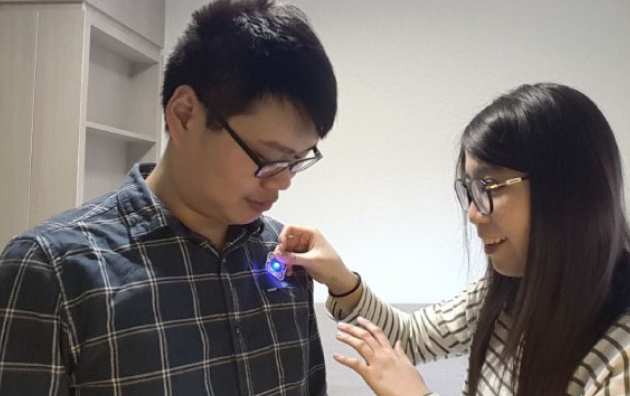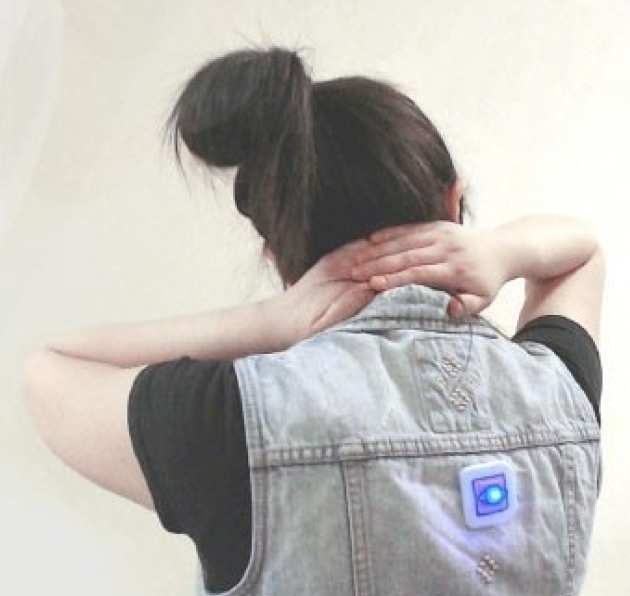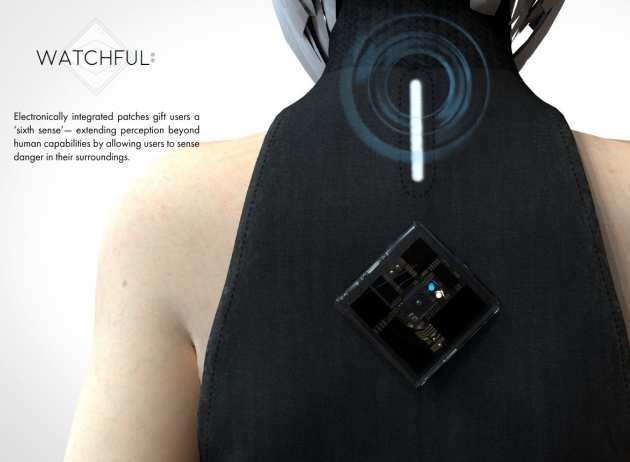DESIRE Awards

Design Engineering Selected Innovation REcognition (DESIRE)
For modules where there is a design engineering output in the form of significant coursework, a module leader or delegated representative selects one item of output for the Design Engineering Selected Innovation REcognition (DESIRE). This is a prestigious award within the School and something that we imagine all students shall aspire to win during the programme of study. DESIRE selected works need not necessarily be associated with the top mark or grade scoring project and may be awarded to a group of students or individual work. We expect DESIRE to become a badge of honour for Design Engineers. Our congratulations to all the winners!
Prizes for 2021/2022
Year 1 DESE40004 Human Centred Design Engineering
BRIEF STATEMENT FROM THE MODULE LEADER, DR CELINE MOUGENOT
The Human Centred Design Engineering module focuses on designing experiences that resonate with their end users and fit into a wider socio-cultural, technological and business context. This year, 31 teams imagined, prototyped and tested design concepts around the topic of personal safety in urban contexts. The three winning teams – Squid, Aerial and Talos - were selected for their excellent implementation of a human-centred design approach.
WINNING GROUP 1
Team members: Paul Eichmann, Freya Wennergren Ridgwell and Qiongyu Zhang
PROJECT TITLE: SQuid – a device that makes online banking more inclusive by increasing the tangibility of digital money SQuid was created by users for users, providing support in raising awareness for financial security, improving tangibility of digital money, quick access tracking, promoting a more intuitive online banking user interface and making banking inclusive and accessible to all.
SQuid was created by users for users, providing support in raising awareness for financial security, improving tangibility of digital money, quick access tracking, promoting a more intuitive online banking user interface and making banking inclusive and accessible to all.
WINNING GROUP 2
Team members: Liam Jones, Katherine Luo and Isaac Siy
PROJECT TITLE: Aerial: A cycling assistant that provides real time proximity warnings, navigation assistance, and enhanced environmental awareness. With a growing interest in cycling and other soft mobility options further increased through COVID, a reinvigorated focus on improving user safety and lowering the barriers to entry to these transport methods was developed. Across the UK, most cycling accidents are caused by issues with communication and awareness, such as "misjudging others' speed". Our sleek and seamless design comes with a warning system based on the relative velocities of other users, a projected navigation system to avoid interruptions, and laser-based pothole detection and indication. These systems can be managed by an app, and customised to user needs and capabilities.
With a growing interest in cycling and other soft mobility options further increased through COVID, a reinvigorated focus on improving user safety and lowering the barriers to entry to these transport methods was developed. Across the UK, most cycling accidents are caused by issues with communication and awareness, such as "misjudging others' speed". Our sleek and seamless design comes with a warning system based on the relative velocities of other users, a projected navigation system to avoid interruptions, and laser-based pothole detection and indication. These systems can be managed by an app, and customised to user needs and capabilities.
WINNING GROUP 3
Team members: Ria Dhopatkar, Avyay Jamadagni and Justin Keung
PROJECT TITLE: Talos – a wearable that prevents theft of personal belongings on public transport Designed for young commuting professionals, Talos aims to transform the commuting experience by making users feel more confident about protecting their valuables during commutes. Users attach tags to devices they want to protect and wear a central device on their body. When the tag is further than a certain distance away from the central device, two things happen: the central device vibrates to alert the user, while the tag sirens alerts other commuters of the theft.
Designed for young commuting professionals, Talos aims to transform the commuting experience by making users feel more confident about protecting their valuables during commutes. Users attach tags to devices they want to protect and wear a central device on their body. When the tag is further than a certain distance away from the central device, two things happen: the central device vibrates to alert the user, while the tag sirens alerts other commuters of the theft.
Year 2 DESE50005 Industrial Design Engineering
BRIEF STATEMENT FROM THE MODULE LEADER, DR. SHAYAN SHARIFI
The Industrial Design Engineering module focuses on holistic design processes applied to an engineering design problem. Students are taken through the process of solving an engineering design problem from user requirements through to final prototype and manufacturing. The winning team developed a compelling and commercially viable product design solution, based on genuine user insights, realised to engineered models, supported by a detailed production data package; a device that detects sleep paralysis through increased heart rate and open eyes, and wakes up the user to end the episode by overhead lights and vibration of a wearable device.
WINNING STUDENT GROUP: Team 02: Benjamin Lovell, Archie Bond, Ruby Grut, Rosie Davies
Project Title: Oura Rise: Track, detect, and end episodes of sleep paralysis
Please note: Oura were not engaged in any consultancy or collaborative capacity with this project and the outcome is in no way endorsed by them. Any publicity is limited to personal and academic use.
Year 3 DESE60001 Design Engineering Futures
WINNING STUDENT GROUP: Camilla Giulia Billari, Hannah Knight, Naini Mandal, Sibylle Rérolle, James Skinner
PROJECT TITLE: Commend
BRIEF STATEMENT FROM THE MODULE LEADER, DR. NAN LI
The proposed product service system ‘Commend’, which aims to support and empower future rainforest communities in making better-informed choices, is very innovative, interesting, and meaningful. The idea of having an augmented reality agent embedded in the forest through multiple sources of information and with growing capability to put together resources and communities to solve complex economic problems is very visionary. The fit with emerging trends of metaverse and cultural grounding of technology is impressive.

WINNING STUDENT GROUP: Irina Barzykina, Amber King, Imogen Guss-Renton, Madelaine Wood
PROJECT TITLE: Visionary – the future of inclusivity 2041
BRIEF STATEMENT FROM THE MODULE LEADER, DR. NAN LI
The proposed product service system ‘Visionary’ which helps people with visual impairment to address their self-expression needs is innovative, interesting, and meaningful. Highly original scenario that goes beyond the state-of-the-art on visual perception and haptics thanks to the contextualised and user-centred approach. The technical developments are always guided by the user research insights, which makes the final future scenario, not only original from a technical point of view, but also highly desirable from a users’ perspective.
Year 4 DESE97018 Design Engineering Master’s Project
BRIEF STATEMENT FROM THE MODULE LEADER, PROF. RAFAEL CALVO
The Master’s Project aims to provide students with the opportunity to work on a major piece of research in Design Engineering, using the knowledge, skills and attitudes learnt throughout the MEng in Design Engineering programme of study. Students are expected to implement a project at the edge of Design Engineering know-how, using new technology or exploiting scientific knowledge. From this year's cohort, four students' work as below have been selected for their outstanding achievements, rigorous process, and excellent outcomes.
WINNING STUDENTS
Student: Shafae Ali
Project Title: Automated Computational Design for Personalised Wearable Footwear Technology
Synopsis:
Shafae Ali
This work achieves a computational design pipeline that automatically generates user-specific footwear from a 3D foot scan, embeds a volumetric autorouted circuit with integrated sensors around the shoe, and adapts surface design based on an image input. The footwear was prototyped, and 3D printed using foaming TPU on a single extruder 3D printer, resulting in a monomaterial variable density shoe, producing 23.8% of CO2e in manufacturing processes compared to existing sneakers. Sensors are used to track motion, pressure and temperature which is then used for human activity recognition through local machine learning. The circuit was manufactured on a low-cost £500 FDM dual extrusion 3D printer using conductive TPU filament.
PROJECT STATEMENT FROM THE MODULE LEADER, PROF. RAFAEL CALVO
Shafae applied everything learned in the Design Engineering programme to produce an innovative type of footwear, advancing concepts to support walking - the most sustainable and healthy form of mobility. Reviewers were particularly impressed by how Shafae used new materials to produce this single-material solution. The project showed evidence of excellence in Design, Engineering and Innovation. His engagement with external partners also demonstrate other skills in team working and translation.

Student: Abigail Langbridge
Project Title: Respiratory-Aware Routing: An Individualised Pollution Mitigation System for Cycle Commuters
Synopsis:
Abigail Langbridge
Transport emissions are globally recognised as a worsening problem, with the cost to the NHS alone forecast to reach £10 billion by 2035. Those travelling in urban areas using active modes are particularly at risk of harm from these emissions due to their increased breathing rate and proximity to vehicles, however this risk is poorly quantified. This work presents a proof-of-concept system for the optimisation of pollution inhalation, demonstrating the remarkable variation of risk between individuals travelling between the same origin and destination. In particular, this work highlights that individuals' risk is strongly dependent on their fitness, with up to three times more pollution inhaled by the less fit subject. This finding demonstrates that personalised commute optimisation could be a hugely effective method of reducing pollution risk, improving the net benefit of active commuting to cyclists in urban areas.
PROJECT STATEMENT FROM THE MODULE LEADER, PROF. RAFAEL CALVO
The report by Abigail demonstrates excellence in the design and execution of an artificial intelligence (AI) and data project. The reviewers highlighted how in each of the studies that form the components of the project. The way the aim was broken down into these components showed a natural instinct for research and development. The work itself showed high rigour and as such clear validation and evaluation of the findings.


Student: Alfie Mcmeeking
Project Title: 3D Printing Self-Healing Footwear With Genetically Modified Bacteria Loaded Bio-inks
Synopsis:
Alfie Mcmeeking
Each year 23 billion pairs of footwear are created, with greater than 300 million disposed of in the same period. Of this footwear, designed to be replaced frequently to keep up with fast fashion and align with the latest trends, 80% are sent to landfills and 20% are incinerated. This model is unsustainable, with large amounts of carbon emissions also produced in the manufacture and transportation. The manufacturing methods and material proposed in this project would result in a 62% reduction in CO2 produced from the life cycle of the shoe. Methods for bacterial growth, along with a computer vision mould detection alert system have been created. Optimised growth mixtures were applied to Micro-3D printing, in which the bacteria directly fill out the form of the shoe. Following the growth of the bacterial pellicle, a method of sterilisation was proposed which produces 33 times fewer carbon emissions than conventional methods. Finally, a second method for shoe production was used, in which a Bacterial nanocellulose-based gel was created and printed using an extrusion 3D printer. This material was extensively tested against footwear requirements.
PROJECT STATEMENT FROM THE MODULE LEADER, PROF. RAFAEL CALVO
Reviewers felt this was an extraordinary effort producing a novel way of manufacturing shoes in a very sustainable way, literally seeking sustainable growth. The report is a fascinating paper that explores the use case of self-healing shoes facilitated by genetically modified bacteria. The methodology is highly detailed and evidence is thoroughly documented. The findings provide strong validation for the product, even though the development and testing remains at rather small scale for now.


Student: Adedunke (Dedun) Oyenuga
Project Title: Sink or Swim? Designing a Web-App to Support Black Women Suffering from Impostor Syndrome
Synopsis:
Adedunke (Dedun) Oyenuga
The impostor phenomenon is disproportionately high among people of African and/or Caribbean descent (Bravata et al., 2019). This project took an intersectional approach to exploring experiences of impostorism, by specifically studying it amongst black women. It involved a user research study including (1) a systematic content review of existing mental health apps, (2) a statistical analysis of impostor syndrome amongst different demographics and (3) interviews with 9 black women and other key stakeholders. The study concluded in the design of a mental health web-app,‘Swim’, specifically designed to support black women experiencing impostor syndrome. This design was completed via a series of participatory workshops where the outcome was a prototype created in Figma.
Swim is a mood-tracking app that enables users who experience impostor syndrome to (1) label their impostorism feelings, (2) rate their intensity, (3) identify where these feelings have come from and (4) take appropriate action to tackle them. It is designed to calm users who need relief from immediate, emotionally heightened periods of impostor syndrome, but also designed for long-term management of the phenomenon.
PROJECT STATEMENT FROM THE MODULE LEADER, PROF. RAFAEL CALVO
The project by Dedun showed excellence in design and the understanding of a 'human systems' type of project with a focus on a problem that affects the health and ageing of many, particularly minority groups in society. Motivated by her personal values, Dedun focused on a very difficult and understudied problem, designing a solution informed by multiple stakeholders.

Prizes for 2020/2021
Year 1 DESE40004 Human Centred Design Engineering
STATEMENT FROM THE MODULE LEADER
Human Centred Design Engineering focuses on designing solutions and experiences that resonate with their end users and fit into a wider socio-cultural, technological and business context. This year, 30 teams imagined, prototyped and tested design concepts around the topic of wellbeing. The three winning teams - Hebe, Breathe and PortaPens – produced strong design outcomes through a rich set of user-centred design methods and a rigourous process.
WINNING GROUP 1
Team members: Laura Bastos, Eva Brazier, Joe Johnson
PROJECT TITLE Hebe: a unique combination of a skipping rope, resistance band and dumbbells to diversify older adults exercise routines.

Cardio, strength and flexibility are the three pillars for a balanced and active lifestyle. Most older adults focus on only one, often neglecting strength and flexibility. Prevent and reverse the effects of ageing with Hebe, an inclusive multifunctional and app-enabled skipping rope that guides the user through the 3 types of exercise.
WINNING GROUP 2
Team members: Harris Mier, Lily Owuye, Shangyun Shi
PROJECT TITLE
Breathe: A smart desktop device that promotes well-being through controlled breathing and guided meditation

Covid-19 forced many people into a new remote working routine, for which they were unprepared. Our inquiry showed that users had a strong association between their usual office and work, but also an association between home and rest. This subconscious association meant user's remote working days are driven by time consuming non-important habits that take a toll on their productivity but, more crucially, on their physical and mental well-being, primarily through stress and the generation of Cortisol, otherwise known as the stress hormone.
Our concept, differentiated to the surrounding market by accessibility and affordability, aims to reduce this negative impact of remote work with a desktop device that prompts users to take regular constructive breaks from work to participate in guided meditation. During which, onboard LEDs pulse at a customisable pace to slow and focus the user's breathing. Research shows that this practice has countless physical health benefits. Furthermore, a built-in heart rate sensor is used to monitor users' health, providing instant feedback to encourage users to break from or continue with their work, based on the devices prediction of their well-being, this is simply communicated with colour coded lighting.
As previously mentioned, the device is fully customisable, from the colour of the product’s over- moulded rubber surface to the colour and pace of the guided breathing LED prompt. With this customisability, we hope to create a comforting familiar experience that earns its place as an everyday remote working convention.
WINNING GROUP #3
Team members: Lavinia Bocaniala, Xianghao Wang, Rita Yammine
PROJECT TITLE
PortaPens: a personalisable, compact and portable skincare storage and application system for teenagers with acne.

PortaPens offers a simplified solution to encourage teens who struggle to maintain their skincare routines consistently to improve their acne. It includes refillable product pens for hands-free application & extra space to store acne medication, all stored in a small, sleek and hygienic case.
Year 3 DESE60001 Design Engineering Futures
WINNING STUDENT-GROUP Alfie Mcmeeking, Andy Ferdinand, Shafae Ali, Judith Weill; Premal Gadhia
PROJECT TITLE Reality – the Future of Footwear
STATEMENT FROM THE MODULE LEADER
This is a hugely impressive project. It excellently combines a creative and innovative response to the global environmental impact of shoes with very thorough and exciting exploration, not just of one, but a number of areas of development which are very plausible in the shoe futures roadmap. The team have consistently gone the extra mile with the work and added excellent value to the individual concepts. The project demonstrates exceptional engineering design development and embodiments, involving rigorous research, product development and evaluation

WINNING STUDENT-GROUP
Noor Ali, Rhiannon Beddoe, Anais Engelmann, Oscar Jones, Coline Ritz
PROJECT TITLE
[EM]POWER - Future decentralised energy systems to alleviate urban poverty

STATEMENT FROM THE MODULE LEADER
The group proposed a very interesting and meaningful topic to tackle the future poverty problems through a decentralised community energy system. The project has great originality and was executed excellently, with outstanding and innovative system design and strong engineering design development process. The results are comprehensive, and the analysis and evaluation are exceptionally insightful.
Year 4 DESE97018 Design Engineering Master's Project
ASSIGNMENT
Final Year Project – October 2020 – June 2021
BRIEF STATEMENT FROM THE MODULE LEADER
The Master’s Project aims to provide students with the opportunity to work on a major piece of research in Design Engineering, using the knowledge, skills and attitudes learnt throughout the Master programme. Students are expected to implement a project at the edge of Design Engineering know-how, using new technology or exploiting scientific knowledge. This year, 51 students delivered their master projects. Four Students were selected for their outstanding achievements, rigorous process, and excellent outcomes.
WINNING STUDENTS
Student: Jordi Albanell Flores
Project Title: Developing a Virtual Reality hearing tool for teenagers with Bilateral Cochlear Implants

Student: Rachel Brown
Project Title: Using Flexibility in Design to Improve the Future Social Cost of a Metro System

Student: Tomas Knaze
Project Title: Promoting Trust in Autonomous Vehicles: The Effects of Personality on Trust and Utilising AR During Automation Takeover

Student: Hannah Quereshi
Project Title: The Feasibility of a 2D Video Game for Reducing Symptoms of Social Anxiety: A Pilot Study

Prizes for 2019/2020
Year 1 DESE40004 Human Centred Design Engineering
DE1 - Human Centred Design Engineering
Assignment:
Group human centred design project consisting of several submissions carried out over two years
Statement from the Module Leader:
Human Centred Design Engineering focuses on making products that resonate with their end users and fit into a wider business, technological and cultural context. This year, 29 teams produced designs around the topic of physical wellbeing and engaged users to identify actual needs, gather feedback on concepts, and ultimately validate their designs. 3 Teams are granted the DESIRE award this year. These teams showed excellent human-centred design process and strong design outcomes.
Winners:
Project title and description:
Protec: A noise monitoring device that integrates into existing PPE for the construction industry.
Team Members: Eve Williamson, James Skinner, Tianxiao Wang

"The ‘SHIELD’ clips onto a pair of ear defenders, integrating into worker’s daily wear, in a clearly visible position. Once dangerous noise levels in the environment are detected, the on-screen display lights red to prompt the user to put on their protection. This eliminates the uncertainty of when ear protection should be put on.
Devices are calibrated individually, based on the attenuation level provided by the user’s ear protection. After placing protection over the ears, the shield accounts for this; turning green when it's safe to remove the defenders, orange if the user is protected, but not safe to take off, and red to indicate that the current protection is insufficient. This confirms whether the user is properly shielded."
Project title and description:
The Model G: An ergonomic keyboard built directly into the frame of a laptop.
Team Members: Daniel Rebollini, Joseph Folkes, Amber King

"Introducing the Model G, the world’s first keyboard for the new NIK Standard. An ergonomic keyboard built entirely into the frame of a normal laptop, with no sacrifices in ergonomics or portability. Designed from the ground up to allow users as much freedom as possible in using laptop keyboards, while helping reduce wrist strain."
Project title and description:
Glow: A discreet belt to alleviate menstrual pain
Team Members: Alana Bralsford, Josh Lowe, Itziar de Pedro

"A modern solution to an age-old problem. Combing comfort and effectiveness has resulted in a blend of innovative design that conforms to our user insights. The breathable material ensures you keep dry by evenly spreading sweat across the surface in order for it to evaportate more quickly. The pads are removable so the belt can be washed. From the heat being applied front and back, the adjustability of the belt strap and the simplicity of putting in the heat pads, user feedback has defined the way our belt fits and behaves."
Year 3 DESE96006 Design Engineering Futures
DE3 - Design Engineering Futures
Assignment:
Group Project
Winners:
Marcus Melconian, Luke Holland, Elvis Lee, Benjamin Collis with: NTX - prosthetics to future HCIs

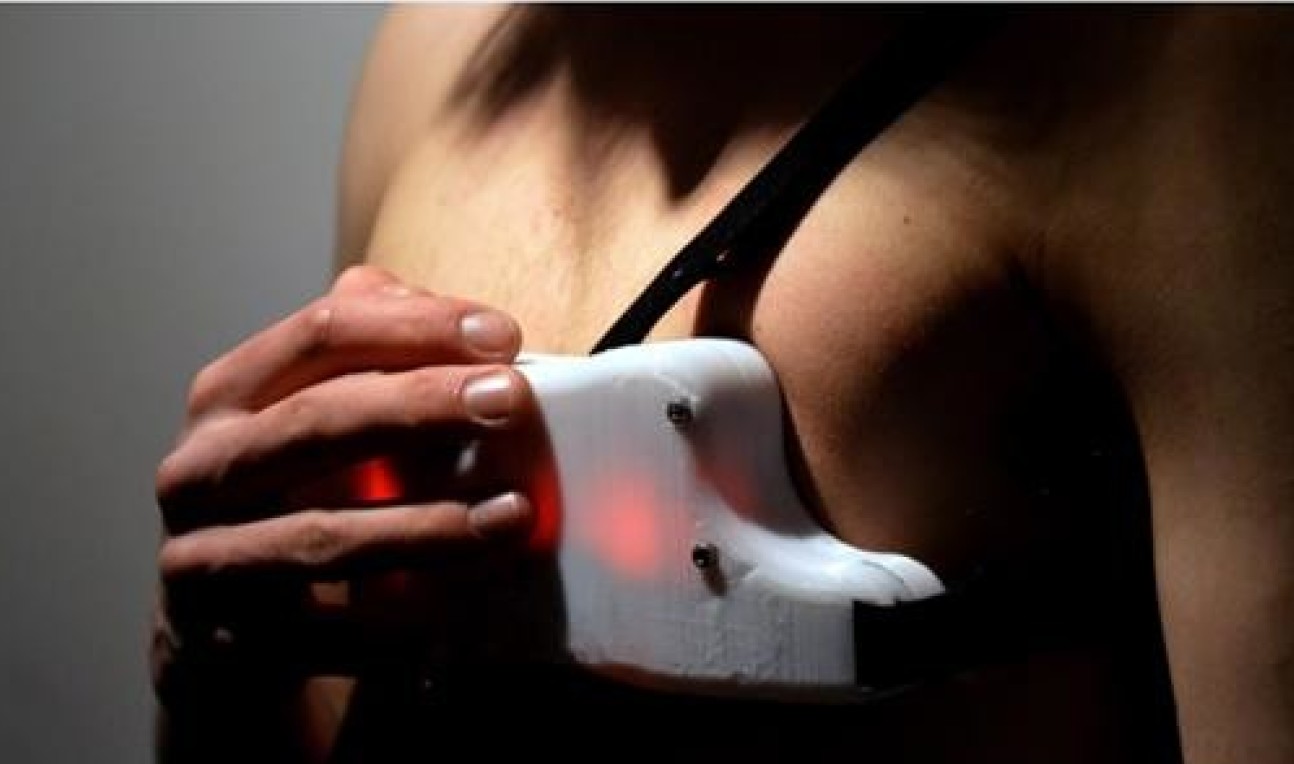
Statement from the Module Leader:
Rooted in grounded technology on haptic feedback in prosthetics, the group developed a novel idea on the delivery of a tangible futures product service system - NTX, with the ability to connect humans to the digital world in revolutionary new ways. Exceptional engineering design development process and embodiments, involving rigorous research, product development, and testing was conducted.
Winners:
Priyen Morjaria, Pasinee Posirisuk, Rachel Brown, Sirada Supanwanich, Barty Pitt with: Extensio - the future of hand exoskeleton design
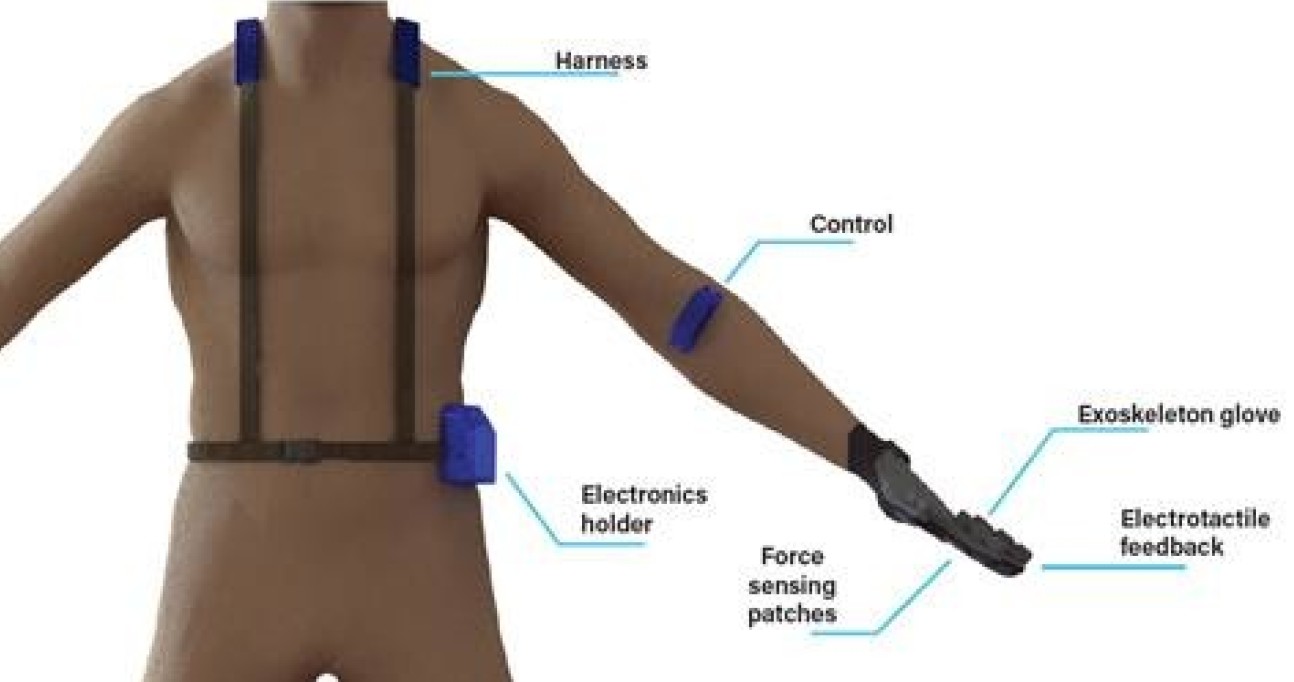
Statement from the Module Leader:
Extensio is a future concept for a hand exoskeleton incorporating haptic feedback designed specifically for stroke patients with impaired hand dexterity and sensation, which will deliver great social impact. The team has conducted an exceptional engineering design process in which a rigorous approach was taken to guarantee that the proposed concept was feasible.
Year 4 DESE97006 Solo Project
DESIRE Award for Sustainability
Winner: Gabriele D’Amone
Project title: Butterfly – Indoor Air Quality
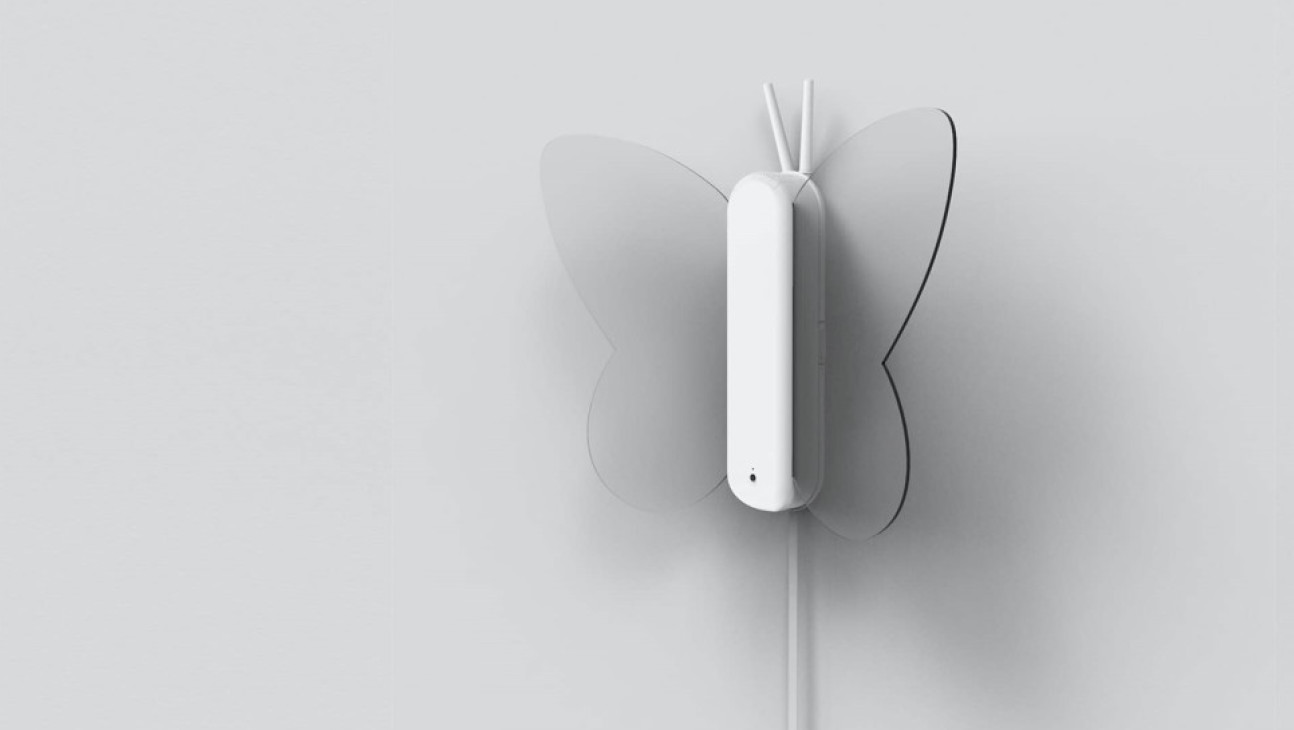 "Indoor Air Quality (IAQ) can impact the health and productivity of building occupants. However, current devices show poor accuracy and confusing readings communication. Butterfly is the first IAQ monitor with a computationally optimised sensing chamber, which enables superior airflow control and unparalleled sensing quality. A 90% faster response time enables occupants to be quickly alerted of unseen hazards through colour-coded acrylic wings. A modular system allows the sensing board to be replaced, ensuring long-term accuracy and easy maintenance."
"Indoor Air Quality (IAQ) can impact the health and productivity of building occupants. However, current devices show poor accuracy and confusing readings communication. Butterfly is the first IAQ monitor with a computationally optimised sensing chamber, which enables superior airflow control and unparalleled sensing quality. A 90% faster response time enables occupants to be quickly alerted of unseen hazards through colour-coded acrylic wings. A modular system allows the sensing board to be replaced, ensuring long-term accuracy and easy maintenance."
Statement from the Module Leader:
The DESIRE Award for Sustainability has been given to “Butterfly” within the Solo Project module led by Dr. Celine Mougenot. The panel was particularly impressed by Gabriele D’Amone’s ambition to propose the first Indoor Air Quality (IAQ) monitor with a computationally optimised sensing chamber. Butterfly enables building occupants to monitor indoor air quality in a highly accurate yet user-friendly manner.
DESIRE award for Social Impact
Winner: Ruksana Shaukat-Jali
Project title: Social Anxiety Sensing System : Detecting Social Anxiety Using Physiological Data
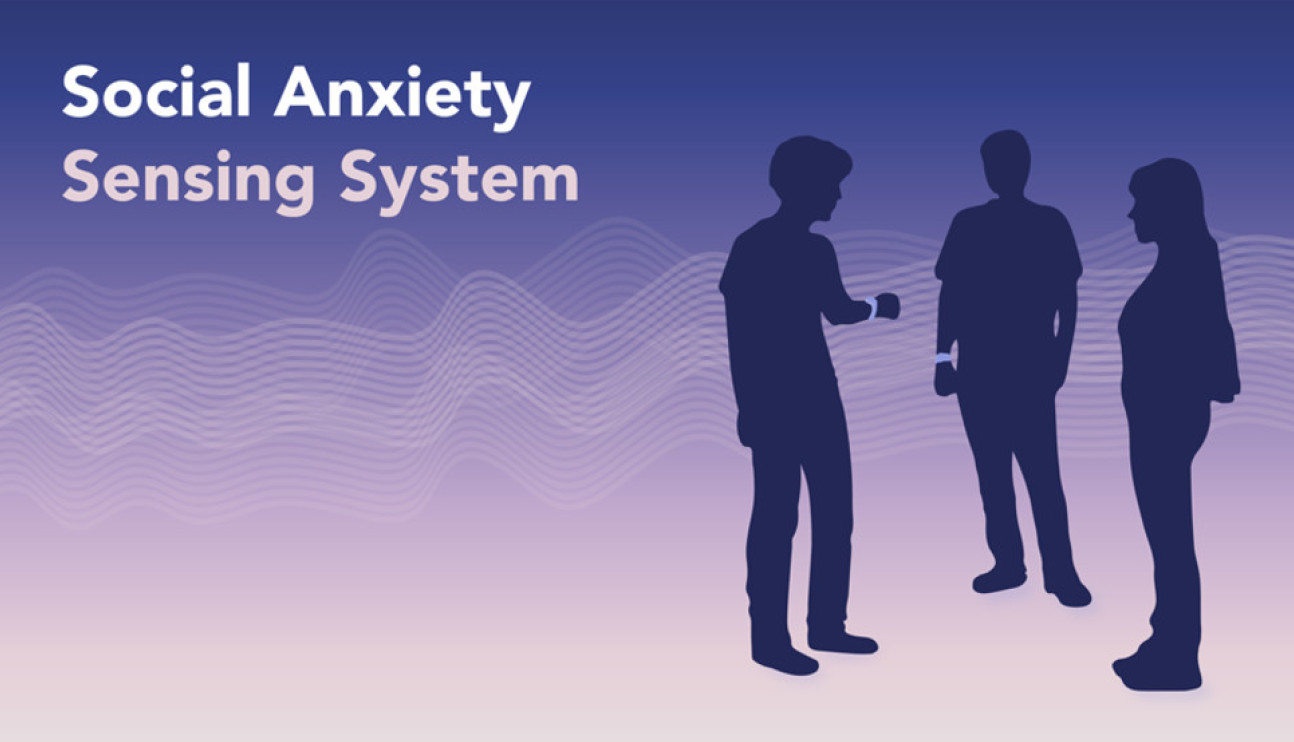 "Social anxiety greatly affects young people’s lives, but the solutions currently in place are inadequate for the rising prevalence of the problem. Detection of social anxiety using wearables may provide a novel way of recognising it, which reveals new opportunities for monitoring and treatment. This would be greatly beneficial for sufferers, the society and healthcare services. This project is one of the first to investigate whether social anxiety in young people can be detected using physiological data collected from a wearable. The results indicated that it could be possible to detect social anxiety in young people using this approach."
"Social anxiety greatly affects young people’s lives, but the solutions currently in place are inadequate for the rising prevalence of the problem. Detection of social anxiety using wearables may provide a novel way of recognising it, which reveals new opportunities for monitoring and treatment. This would be greatly beneficial for sufferers, the society and healthcare services. This project is one of the first to investigate whether social anxiety in young people can be detected using physiological data collected from a wearable. The results indicated that it could be possible to detect social anxiety in young people using this approach."
Statement from the Module Leader:
The DESIRE Award for Social Impact has been given to “Social Anxiety Sensing System” within the Solo Project module led by Dr. Celine Mougenot. The panel was particularly impressed by Ruksana Shaukat-Jali’s project which pioneers the detection of social anxiety using physiological data collected from a wearable. By revealing new opportunities for monitoring and treatment of social anxiety, the project is expected to be greatly beneficial for sufferers, the society and healthcare services.
DESIRE award for Creativity
Winner: Federico Tiersen
Project title: Holdable Devices: Making Our Phones Good for Our Brains
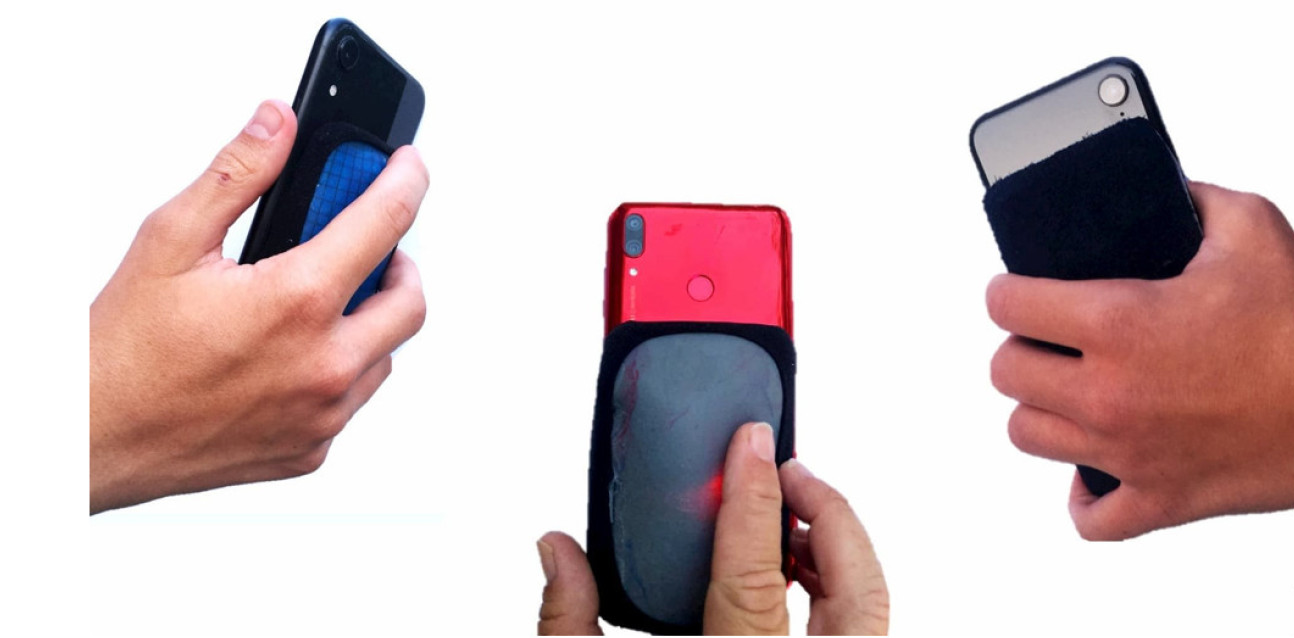 "Holdable Devices have the ability to sense when you use your phone inattentively or compulsively. They then induce mindfulness and reflection through tactile feedback and abstract visualisations, so you effortlessly regain control of your phone, your time and your mind. User-centred design, psychology and engineering methodologies were combined to create tangible interfaces that tackle the underlying mechanisms of problematic smartphone habits. An integrated hardware and software solution accurately classifies potentially unhealthy behaviours (e.g., scrolling or tapping through social media, frequently checking for notifications)."
"Holdable Devices have the ability to sense when you use your phone inattentively or compulsively. They then induce mindfulness and reflection through tactile feedback and abstract visualisations, so you effortlessly regain control of your phone, your time and your mind. User-centred design, psychology and engineering methodologies were combined to create tangible interfaces that tackle the underlying mechanisms of problematic smartphone habits. An integrated hardware and software solution accurately classifies potentially unhealthy behaviours (e.g., scrolling or tapping through social media, frequently checking for notifications)."
Statement from the Module Leader:
The DESIRE Award for Creativity has been given to “Holdable Devices: Making Our Phones Good for Our Brains” within the Solo Project module led by Dr. Celine Mougenot. The panel was very impressed by Federico Tiersen’s tangible interface that can detect when a phone is used inattentively or compulsively and induce mindfulness through tactile feedback and abstract visualisations. User-centred design, psychology and engineering were combined to create interfaces that tackle the underlying mechanisms of problematic smartphone habits.
DESIRE award for Technological Breakthrough
Winner: Minal Choudhary
Project title: IUC: A Novel Non-Hormonal Contraceptive
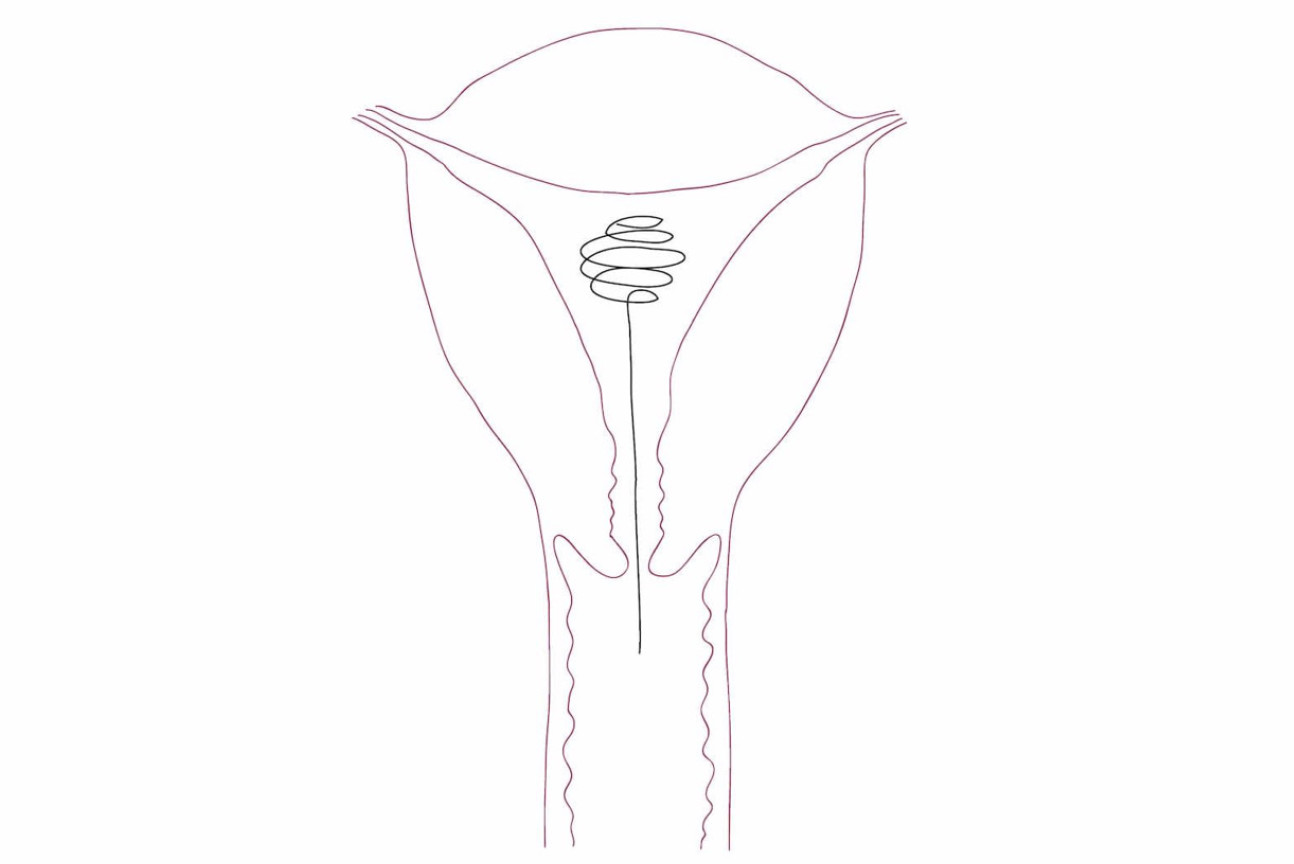 "The IUC is a smaller, softer and more flexible copper intrauterine device, which aims to reduce the pain points associated with current IUDs."
"The IUC is a smaller, softer and more flexible copper intrauterine device, which aims to reduce the pain points associated with current IUDs."
Statement from the Module Leader:
The DESIRE Award for Technological Breakthrough has been given to “IUC: A Novel Non-Hormonal Contraceptive” within the Solo Project module led by Dr. Celine Mougenot. The panel was impressed by Minal Choudhary’s proposal to disrupt the field of intrauterine contraception using a combined approach in service design, additive manufacturing and materials science. This novel intra-uterine device (IUD) – smaller, softer and more flexible than competitors - is expected to reduce women’s pain and health complications associated with current IUDs.
Prizes for 2018/19
Year 1 DE1-DES1 Human Centred Design Engineering
Year 1 - Human Centred Design Engineering
Assignment:
Human Centred Design Engineering
Statement from the Module Leader:
The Human Centred Innovation Project asks first year students to develop a team brand within which each student designs a product to improve a target user’s physical wellbeing. In addition to considerations for the technical aspects of a physical product design, the students consider an accompanying business model and seek feedback throughout the design process to ensure the design is desirable. The awarded students all were in the top ten percent of the module overall and received high marks in both the individual and group parts of the project.
Winners:
Project title and description:
Clean Kit by Noor Ali
CleanKit aims to particularly improve personal hygiene for homeless people who have limited access to basic hygiene products and services.

"It presents an alternative to using public facilities that may evoke user shame and embarrassment, keeping hygiene privatefor homeless people as it is for the wider public. Physical self-care is vital for preventing minor health problems becoming serious illnesses while also rebuilding the user’s sense of self and dignity."
Project title and description:
Endorphus by Theo Kane
Punch for fun

"The user must punch or kick the bag when it is upright, this is indicated by the LED’s at max intensity. If the user succeeds the lights will flash green if not red. The user should try to build up a streak of successful hits with increasing difficulty."
Project title and description:
We by Abigail Langbridge
Socially inclusive gym equipment design for Cerebral Palsy

"We is an adaptive crutch handle designed to enable people with cerebral palsy and other more ‘invisible’ disabilitiesto build muscle strength holistically by supplementing their physiotherapy with e-Sports played in a group settingusing tools such as the Nintendo Wii Balance Board. We aims to improve both the physical and mental wellbeing ofpeople using the handle by making exercise easy, non-threatening, and most of all fun."
Project title and description:
SwaddlePack by Rui Li
Safety and Protection for the Homeless: "Be Safe, Feel Safe"

"Engineered combination of the sleeping bag and backpack to protect homeless individuals from street violence. It takes account of safety, privacy, and portability, while also making an effort to facilitate connections between rough sleepers and their local community by establishing a safeguard system."
Project title and description:
Target by Patrick McGuckian
The AnyShape Target

"Target is a fun way to get active in the workspace. Continuous player feedback and testing throughout its development process means it’s simple ball game is fun to play for people of any ability."

Project title and description:
Facio Fuggente by Alberto Montemiglio
At facio we aim at enabling everyone to enjoy physical exercise

"Fuggente enhances everyone’s experience in swimming pools. It also allows paraplegic people to enter and exit the water autonomously. Unlike usual, stigma-carrying products for disability, designed solely for disabled people, Fuggente is designed for the enjoyment of everyone.
Fuggente in particular aims at educating the new generations towards a world where disabled people are de-stigmatised and homogeneously integrated with the rest of the population."
Year 3 DE3-GP Design Engineering Futures - Group Project
Year 3 - Design Engineering Futures
Assignment:
Group Project
Winners:
Melisa Mukovic, Will Pepera, Alfie Thompson, Oliver Thompson, Richard Zhang with: Your mental health in a future workspace - Embla
https://youtu.be/PhbPW3ut4oU


Statement from the Module Leader:
‘Embla’ envisages a near future where a suite of wearable and environmental sensors are part of an integrated system to optimise workplace environments and mental wellbeing through responsive sensory inputs such as lighting, smell, air quality and sound. The team’s work was distinguished by the exceptional quantity and quality of practical prototyping and testing carried out to explore and validate the concept ideas, culminating in the impressive presentation of a complete environment where participants could directly experience the final concepts.
Winners:
Minal Choudhary, Sam Willis, Tom Woodburn with: Untethered robots - Ro-Biotics


Statement from the Module Leader:
‘Ro-biotics’ is an innovative futures concept to tackle the global anti-biotics resistance crisis. The concept is based on injectable micro-scale 4D bio-sensitive smart actuating star shaped ‘robots’ which capture and destroy infected material. From the start the team adopted a highly focused and professional approach; identifying the importance of defining a distinctive proposition and for this to be informed and validated by excellent investigation and collaboration with relevant experts.
Year 4 DE4-SPR Solo Project
Year 4 - Solo Project
DESIRE Award for Social Impact
Project Title:
AFFLO - an AI-enabled wearable device to track and record asthmatic symptoms and triggers
Statement from Module Leader:
AFFLO wearable monitor has the potential to change the life of 235 million people who live with asthma. The AI-enabled wearable and app provide users with predictions about their personal triggers, based on the analysis on their respiratory signals and environmental conditions, thus allowing them to make informed decisions to minimize their asthmatic symptoms.
Winner:
Anna Bernbaum

DESIRE award for Technological Breakthrough
Project Title:
OLYMPIC, a Modular Prosthetic Hand with Novel Finger and Wrist Coupling Mechanisms
Statement from Module Leader:
Lois has extended the state of the art in the design of dexterous prosthetic hands by implementing the first fully modular, tendon-driven prosthetic hand, capable of achieving high dexterity and simple maintenance. This system will allow the seamlessly testing of multiple designs of fingers and palms for both grasping and in-hand manipulation, something that is not possible nowadays.
Winner:
Lois Liow

DESIRE Award for Creativity
Project Title:
Art blanche - Tangible memories. Study of user experience and tangible representations of human interactions with interactive installations
Statement from Module Leader:
Art Blanche is an interactive machine that creates a visual representation of the movement of a spectator on a piece of paper, thus allowing people to produce a visual piece of art through dance and movement. Using recent advances in human-centered design of interactive systems and focusing on user experience, the project showcases an original use of technology for the implementation of a novel application.
Winner:
Beatriz Lopez Lopez-Neira

Prizes for 2017/18
Year 1 DE1-CID Design 1
Year 1 - Design 1
Assignment:
Human Centred Wellbeing, Spring & Summer 2018
Statement from Module Leader:
In the first year, students develop a product focusing on human factors. The assignment requires that students balance the demands of an overarching group brand, a product developed through feedback from users and a business model focusing on customers. The final products were assessed by a panel consisting of members of staff and industry assessors. This year, the panel decided to give the award to four individuals whose work stood out in terms of their process, prototyping, business model considerations and contributions to the broader brand.
Winners:
Maria Higgins – Bikefitter (with contributions to the Sporteknik brand)

"Bikefitter allows you to accurately and consistently measure and transfer your fitto other bikes and geometries. It allows easy and precise measurement of the three contact points and the angle in between with digital angle measurement.It is also has an attachment to allow measurement of traditional Stack and Reach, making easy comparison to manufacturer’s bike sizing charts.So whether you are eating miles on your road bike, churning up mud on your cross, or bouncing down rocks on your mountain bike, all can have the right fit to ensure you don’t get those niggles and injuries that stops you riding.Bike fitter folds up and stores into a neat hard wearing case making it an essential piece of kit for any serious bike rider."
Josh Anderson – Veer: the all new portable pullup bar (with contributions to the Motus brand

"The unique, robust pullup bar that can compact into space 16 times smaller than it’s original size: Upper body workouts during travel will never be out of reach.
The bar can work on any standard single door with an architrave, and will collapse into a size that will effortlessly fit in the hand luggage requirements of all major airlines."
Muhammad (Saym) Hussain – Pollution Kills: a smart textile solution (with contributions to the ITIO brand)

"The Pollution Kills jacket by ITIO discretely filters air pollution without the need to cover one’s face, and provides a bold statement to raise awareness of the issue. Through a system of embedded filtration channels on the inside of the jacket and a simple design on the outside, pollutants are absorbed without distracting from one’s aesthetics and the jacket add value to one’s personal style."
Sana Pirmohamed – Travel Gym: a portable toning kit (with contributions to the Motus brand)

"The components form a modular system, and can be joined to form different pieces of exercise equipment including:
- Ab Roller
- Push Up Bars
- Skipping rope
- Resistance band weights
Additionally, a camera and app are provided to analyse body posture and aid users in following a workout correctly and easily."
Year 3 DE3 DE3-ID Industrial Design
Year 3 - Industrial Design
Assignment:
Industrial Design lo-fi prototyping
Statement from Module Leader:
As part of the Industrial Design elective students took part in a one day intensive lo-fi prototyping session in the School workshops to explore and consolidate their concept ideas. Towards the end of the day the module tutors; Dr Stephen Green and Olga Kravchenko, reviewed the outcomes and Lois Liow was judged to have comprehensively embraced the value of lo-fi prototyping and utilised the limited time available to produce an excellent range of models exploring a variety of formats for her ‘Watchful’ concept. Her idea consists of fashion orientated wearable technology elements, including backward facing image capture, which can provide heightened levels of personal protection in a variety of contexts. Therefore the Desire award is given for this combination of the quality of the design idea and the associated lo-fi prototying activity. Lois received her award at an Industry Review evening attended by the whole year group, staff and a number of industry representatives.
Winner:
Lois Liow
